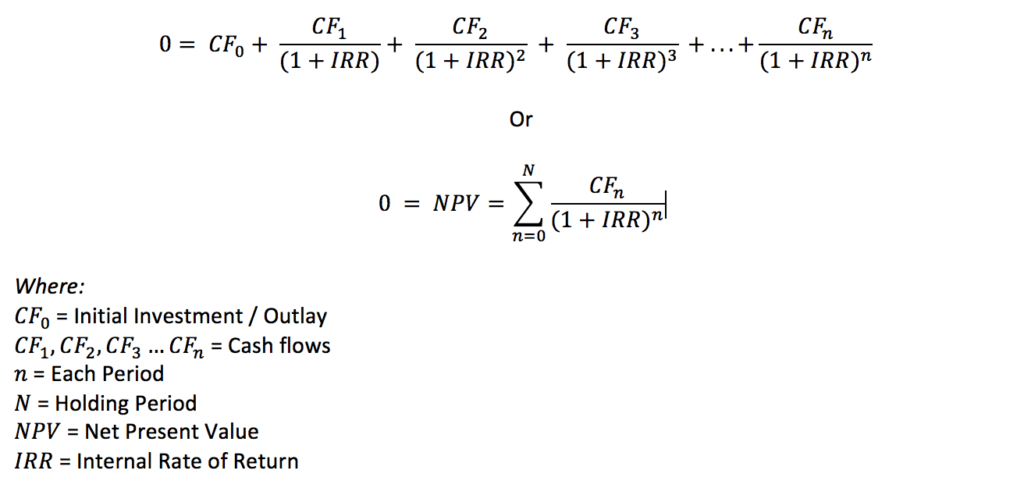Internal Rate of Return (IRR)
IRR is a metric which used in capital budgeting to estimate the profitability of an investment for the project. The internal rate of return is the annualized effective compounded return rate or rate of return that make the net present value (NPV) of all cash flows from a particular investment equal to zero.If your company's cost of capital is 6 percent, then any investment or project that will yield an internal rate of return higher than 6 percent is feasible. If your company is presented with an opportunity to purchase long-term Treasury bonds at 4 percent, this IRR of 4 percent is below your cost of capital and, therefore, is an unwise investment. However, say another investment opportunity arises which, upon further analysis, your accountant determines will yield an IRR of 10 percent. Your company should invest in that project, because the internal rate of return exceeds 6 percent.

- Now: PV = -₹2,000
- Year 1: PV = ₹100 /
1.10 = ₹90.91
- Year 2: PV = ₹100 / 1.10^2 = ₹82.64
- Year 3: PV = ₹100 / 1.10^3 = ₹75.13
- Year 3 (final payment): PV = ₹2,500 / 1.10^3 = ₹1,878.29
(continued) at 12.4% interest rate
- Now: PV = -₹2,000
- Year 1: PV = ₹100 / 1.124 = ₹88.97
- Year 2: PV = ₹100 /1.124^2 = ₹79.15
- Year 3: PV = ₹100 / 1.124^3 = ₹70.42
- Year 3 (final payment): PV = ₹2,500 / 1.124^3= ₹1,760.52
Accounting Rate Of Return (ARR) - Meanings, Formulas, Examples, Advantages & Disadvantages
Annual Percentage Rate (APR) - Definitions, Types, Uses & Formulas
Bonds - Definitions, Functions & Classifications
Capital Asset Pricing Model (CAPM) - Definitions, Formulas & Examples
Capital Budgeting - Meanings, Objectives, Importance, Features & Methods
Cost of Capital - Definitions, Classifications & Formulas
Cost of Equity - Definitions, Formulas, Assumptions, Limitations & Examples
Dividend - Defintions, Types & Examples
Financial Leverage - Definitions, Measures, Factors, Advantages, Disadvantages, Formulas & Examples
Financial Ratio - Meanings, Types, Ratios & Indicators
IRR - Definitions, Uses, Formulas with Examples
Mutual Fund (MF) - Definitions, Categories & Types
Payback Period Method - Meaning, Formula, Calculations, Advantages & Disadvantages
Preference Shares - Definitions, Formulas, Advantages, Disadvantages & Examples
Profitability Index - Meanings, Formulas, Examples & Solutions
ROI - Definitions, Formulas with Examples
Time, Value & Money (TVM) - Definitions, RRR, FV, PV, Annuity, Formulas with Examples
Venture Capital - Definitions, Process, Features, Advantages & Disadvantages







0 Comments